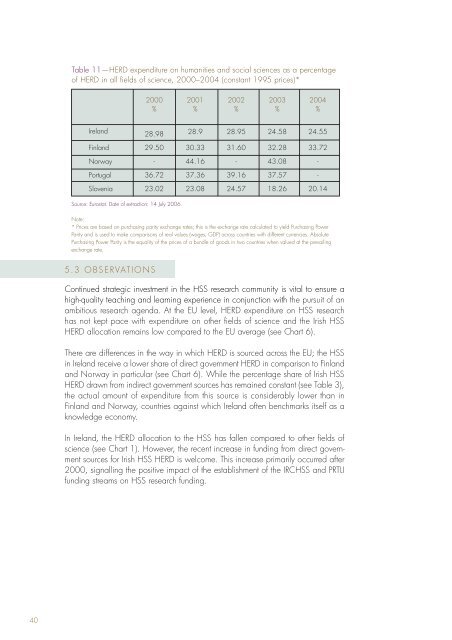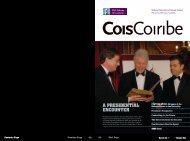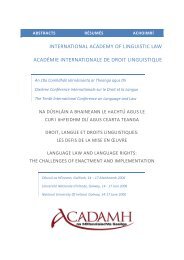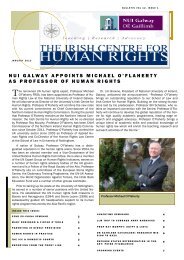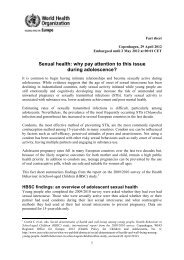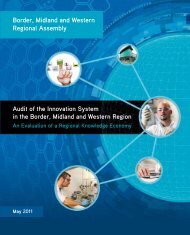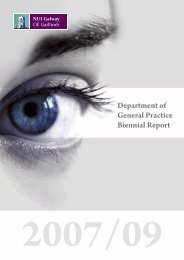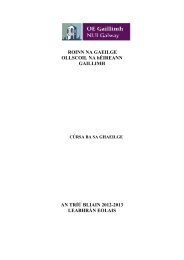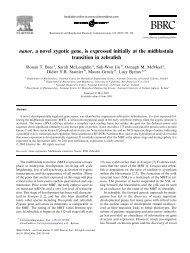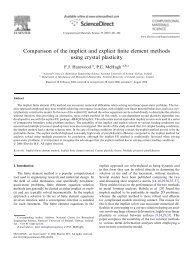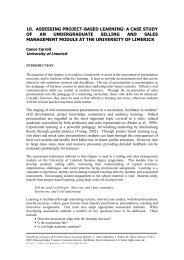Advancing Humanities and Social Sciences Research in Ireland
Advancing Humanities and Social Sciences Research in Ireland
Advancing Humanities and Social Sciences Research in Ireland
You also want an ePaper? Increase the reach of your titles
YUMPU automatically turns print PDFs into web optimized ePapers that Google loves.
Table 11—HERD expenditure on humanities <strong>and</strong> social sciences as a percentage<br />
of HERD <strong>in</strong> all fields of science, 2000–2004 (constant 1995 prices)*<br />
2000<br />
%<br />
2001<br />
%<br />
2002<br />
%<br />
2003<br />
%<br />
2004<br />
%<br />
Irel<strong>and</strong><br />
28.98 28.9 28.95 24.58 24.55<br />
F<strong>in</strong>l<strong>and</strong> 29.50 30.33 31.60 32.28 33.72<br />
Norway - 44.16 - 43.08 -<br />
Portugal 36.72 37.36 39.16 37.57 -<br />
Slovenia 23.02 23.08 24.57 18.26 20.14<br />
Source: Eurostat. Date of extraction: 14 July 2006.<br />
Note:<br />
* Prices are based on purchas<strong>in</strong>g parity exchange rates; this is the exchange rate calculated to yield Purchas<strong>in</strong>g Power<br />
Parity <strong>and</strong> is used to make comparisons of real values (wages, GDP) across countries with different currencies. Absolute<br />
Purchas<strong>in</strong>g Power Parity is the equality of the prices of a bundle of goods <strong>in</strong> two countries when valued at the prevail<strong>in</strong>g<br />
exchange rate.<br />
5.3 OBSERVATIONS<br />
Cont<strong>in</strong>ued strategic <strong>in</strong>vestment <strong>in</strong> the HSS research community is vital to ensure a<br />
high-quality teach<strong>in</strong>g <strong>and</strong> learn<strong>in</strong>g experience <strong>in</strong> conjunction with the pursuit of an<br />
ambitious research agenda. At the EU level, HERD expenditure on HSS research<br />
has not kept pace with expenditure on other fields of science <strong>and</strong> the Irish HSS<br />
HERD allocation rema<strong>in</strong>s low compared to the EU average (see Chart 6).<br />
There are differences <strong>in</strong> the way <strong>in</strong> which HERD is sourced across the EU; the HSS<br />
<strong>in</strong> Irel<strong>and</strong> receive a lower share of direct government HERD <strong>in</strong> comparison to F<strong>in</strong>l<strong>and</strong><br />
<strong>and</strong> Norway <strong>in</strong> particular (see Chart 6). While the percentage share of Irish HSS<br />
HERD drawn from <strong>in</strong>direct government sources has rema<strong>in</strong>ed constant (see Table 3),<br />
the actual amount of expenditure from this source is considerably lower than <strong>in</strong><br />
F<strong>in</strong>l<strong>and</strong> <strong>and</strong> Norway, countries aga<strong>in</strong>st which Irel<strong>and</strong> often benchmarks itself as a<br />
knowledge economy.<br />
In Irel<strong>and</strong>, the HERD allocation to the HSS has fallen compared to other fields of<br />
science (see Chart 1). However, the recent <strong>in</strong>crease <strong>in</strong> fund<strong>in</strong>g from direct government<br />
sources for Irish HSS HERD is welcome. This <strong>in</strong>crease primarily occurred after<br />
2000, signall<strong>in</strong>g the positive impact of the establishment of the IRCHSS <strong>and</strong> PRTLI<br />
fund<strong>in</strong>g streams on HSS research fund<strong>in</strong>g.<br />
40


